Philips Avent Sterilizer Manual
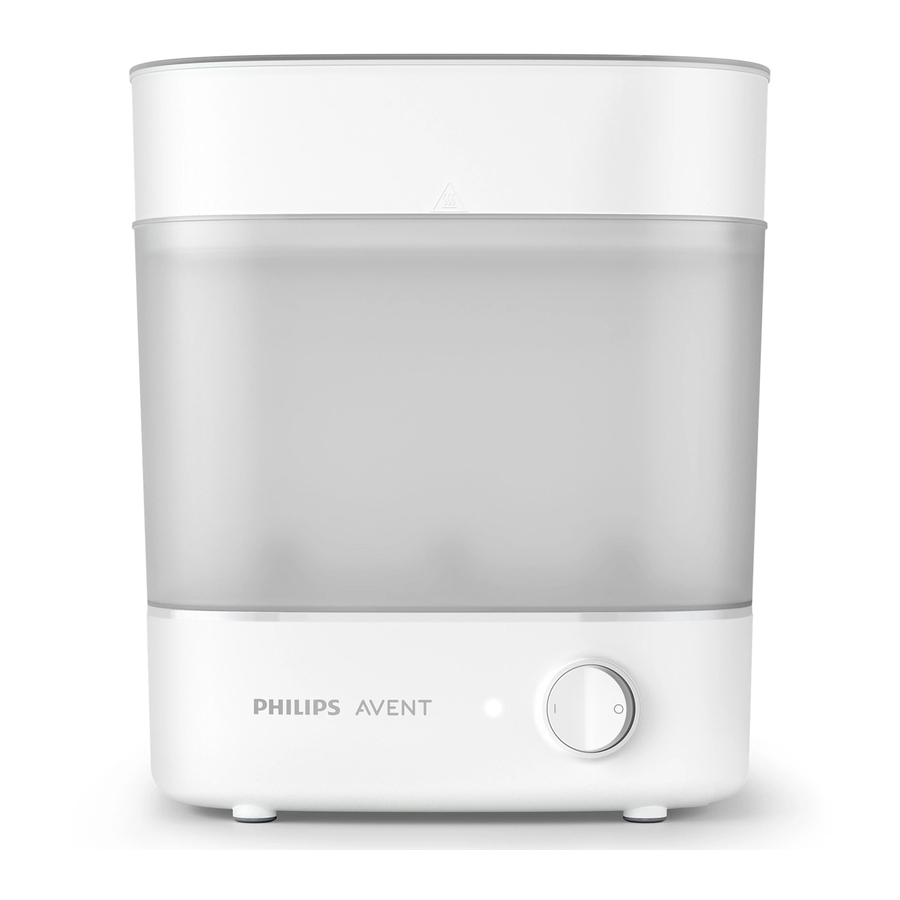

Read this user manual carefully before you use the appliance and save it for future reference.
- Never immerse the base, the power cord or the mains plug in water or any other liquid.
- Failure to follow the descaling instructions may cause irreparable damage.
- Never disassemble the base to avoid the risk of electric shock.
- This appliance can be used by persons with reduced physical, sensory or mental capabilities or lack of experience and knowledge if they have been given supervision or instruction concerning use of the appliance in a safe way and if they understand the hazards involved.
- This appliance shall not be used by children. Keep the appliance and its cord out of the reach of children.
- Children shall not play with the appliance.
- Check if the voltage indicated on the appliance corresponds to the local mains voltage before you connect the appliance.
- Do not use the appliance if the plug, the power cord or the appliance itself is damaged.
- If the power cord is damaged, it must be replaced by Philips, a service center authorized by Philips or similarly qualified persons in order to avoid a hazard.
- There are no serviceable parts inside the electric steam sterilizer. Do not attempt to open, service or repair the electric steam sterilizer yourself.
- The appliance becomes extremely hot during operation and may cause burns if it is touched.
- Beware of hot steam that comes out of the vent in the lid or when you remove the lid. Steam can cause burns.
- Do not touch the base, the baskets and the lid during or shortly after operation because they are very hot. Only lift the lid by its grip.
- Never move or open the appliance when it is in use or when the water in it is still hot.
- Never place items on top of the appliance when it is in use.
- Only use water without any additives.
- Do not put bleach or other chemicals in the appliance.
- Do not pour water over the indication on reservoir or 130 ml/4.5 oz water.
- Only sterilize baby bottles and other items that are suitable for sterilizers. Check the user manual of the items you want to sterilize, to make sure they are suitable for sterilizers.
- If you want to stop the operation, press power off button (for SCF291) or press the on/off button (for SCF293) to turn off the appliance.
- This appliance is intended for household use only.
- Do not misuse the sterilizer for other than its intended use to avoid potential injury.
- Never use any accessories or parts from other manufacturers or that Philips does not specifically recommend. If you use such accessories or parts, your guarantee becomes invalid.
- Do not expose the appliance to extreme heat or direct sunlight.
- Always let the appliance cool down before you move or store it.
- The accessible surfaces may become hot during use.
- Do not sterilize very small items which can fall through the holes in the bottom of the basket.
- Never place items directly on the heating element when the appliance is switched on.
- Do not use the appliance if it has fallen or is damaged in any way. Take it to an authorized Philips service center for repair.
- Always place and use the appliance on a dry, stable, level and horizontal surface.
- Do not place the appliance on a hot surface.
- Do not let the power cord hang over the edge of the table or worktop on which the appliance stands.
- Always pour any remaining water out of the appliance after use and when the appliance has cooled down.
- Switch off the appliance and disconnect from supply before changing accessories or approaching parts that move in use.
- Environmental conditions, such as temperature and altitude, may affect the functioning of this appliance.
- Cleaning and user maintenance shall not be made by children.
- Always disconnect the device from supply if it's left unattended.
Electromagnetic fields (EMF)
This Philips appliance complies with all applicable standards and regulations regarding exposure to electromagnetic fields.
Getting to know the settings
Note: Before you sterilize bottles and other items, clean them first.
Only place items in the sterilizer which are suitable for sterilizing. Do not sterilize items that are filled with liquid, e.g. a teether with cooling fluid.
Sterilize
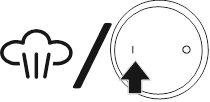 | • Sterilize mode is for sterilizing baby items.
• A sterilizing cycle takes approximately 10 minutes.
• Heating up takes approximately 4 minutes and sterilizing takes approximately 6 minutes.
• Make sure to pour exactly 130 ml/4.5 oz distilled water directly into the water reservoir of the base. |
Auto (SCF293 only)
 | • Auto mode is for sterilizing and drying baby items in one go.
• An auto cycle takes approximately 40 minutes.
• When you use the "Auto" mode, the appliance starts sterilizing first and then drying will start automatically. The sterilizing cycle takes approximately 10 minutes, and the drying cycle takes approximately 30 minutes.
• Make sure to pour exactly 130 ml/4.5 oz distilled water directly into the water reservoir of the base. |
Dry (SCF293 only)
 | • Dry mode is for drying baby items.
• A drying cycle takes approximately 30 minutes.
• When you dry baby items, do not add water to the water reservoir of the base. |
Things to Note
- Don't immerse the base unit in water.
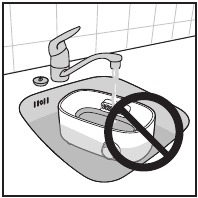
- Use 130 ml/4.5 oz distilled water.
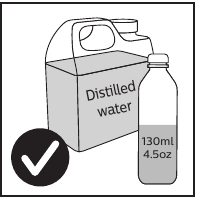
- Clean the items beforehand.
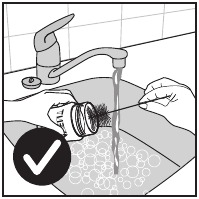
- Disassemble all parts completely and place them with openings pointing down.
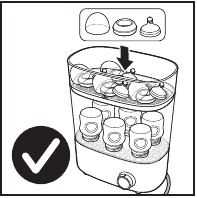
- Pour out the remaining water from large basket after each use.
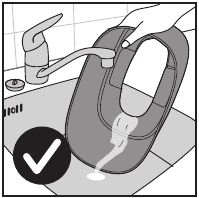
- Clean the filter every 4 weeks.
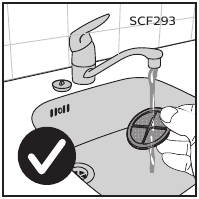
- Descale the sterilizer every 4 weeks.
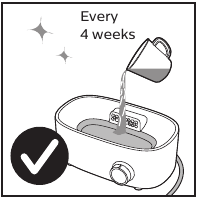
Before first use
When you use the appliance for the first time, we advise you to let it complete one sterilization process with empty baskets.
- Use a clean baby bottle and pour exactly 130ml/4.5 oz distilled water directly into the water reservoir of the base.
Tip: Using distilled water can minimize the formation of limescale on heating element. For more information on limescale, see section "Descaling".
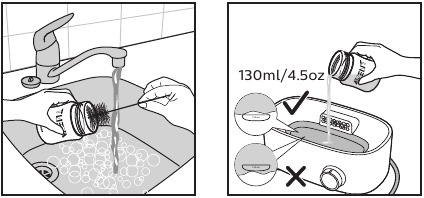
- Place the large basket on the base.
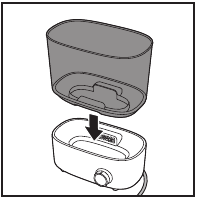
- Place the bottom plate in the large basket.
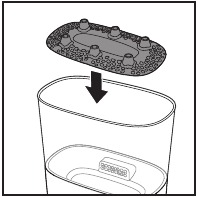
- Place the small basket on the large basket.
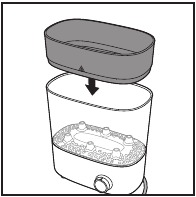
- Place the lid on top of the small basket.
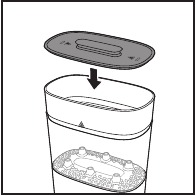
- Put the plug in the wall socket.
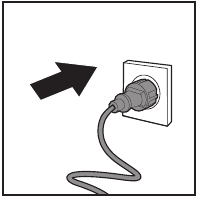
- SCF291: Press the power on button to switch on the appliance.
SCF293: Turn the on/off button to "Sterilize" mode. Then press it to switch on the appliance.
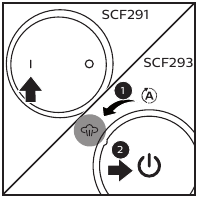
Note: If you plug in the appliance after you have pressed the power on button, the sterilizer starts working immediately. You can switch it off by pressing power off button.
SCF291
- The on/off indicator light lights up to indicate that the appliance starts sterilizing.
- When the sterilization process is finished, the light goes off and the appliance switches off automatically.
SCF293
- The entire progress indicator lights flash to show the appliance is sterilizing.
- When the sterilization process is finished, the lights go off and the appliance switches off automatically.
- You can turn the on/off button to "Dry" mode to dry the appliance. It takes approximately 30 minutes to complete the drying cycle.
- After the appliance has cooled down completely, remove the lid, the small basket, the bottom plate, the large basket and wipe them dry.
Note: When you remove the large basket from the base, be aware of the remaining water on the base drip tray.
- Let the appliance cool down completely for approximately 10 minutes before you use it again.
Note: The appliance does not work for 10 minutes after a sterilizing cycle. It needs to cool down first.
Preparing for use
Preparing for sterilizing
Before you put the items to be sterilized in the sterilizer, clean them thoroughly in the dishwasher or clean them by hand with hot water and some liquid dishwashing detergent.
Assembling the sterilizer
There are several ways to assemble the sterilizer.
- With only the small basket on the base to sterilize small items such as soothers.
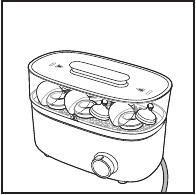
- With only the large basket on the base to sterilize medium-sized items such as breast pumps, toddler plates or toddler cutlery.
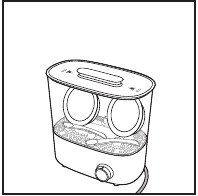
- With the large basket and the small basket on the base to sterilize up to six 330ml/ 11oz bottles. Place the bottles upside down in the large basket and place the bottle dome caps, screw rings and teats in the small basket.
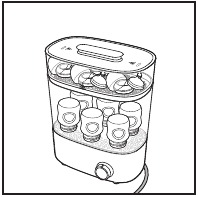
Note: When you fill the small basket, put screw rings on the bottom, place the teats and the bottle caps loosely on top of the screw rings.
Note: Make sure all parts that need to be sterilized are completely disassembled and place them in the basket with their openings pointing down to prevent them from filling up with water.
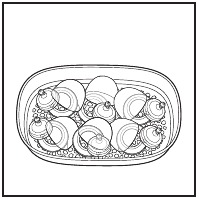
Using the appliance
Sterilizing (SCF291 and SCF293)
- Pour water directly into the water reservoir of the base (see section "Before first use").
- Assemble the sterilizer (see section "Assembling the sterilizer") and place the items to be sterilized in it.
- Place the lid on top of the small or large basket.
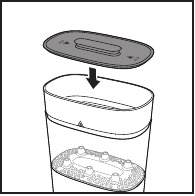
- Put the plug in the wall socket.
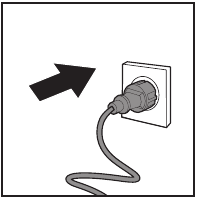
- SCF291: Press the power on button to switch on the appliance.
SCF293: Turn the on/off button to "Sterilize" mode. Then press it to switch on the appliance.
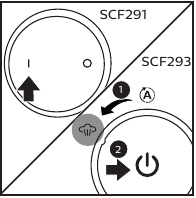
SCF291
- The on/off indicator light lights up to indicate that the appliance starts sterilizing.
- When the sterilization process is finished, the light goes off and the appliance switches off automatically.
SCF293
- The entire progress indicator lights flash to show the appliance is sterilizing.
- When the sterilization process is finished, the lights go off and the appliance switches off automatically.
- Remove the lid.
Wait until the appliance has cooled down before you remove the lid.
Be careful. Hot steam may come out of the sterilizer.
- Remove the bottles and other items from the basket. Use the tongs to remove the smaller items.
Be careful. The sterilized items may still be hot.
Note: Make sure you wash your hands thoroughly before you touch the sterilized items.
- Unplug the appliance and wait until the appliance has cooled down completely.
- Remove the small basket and large basket.
Note: When you remove the large basket, be aware of the remaining water on the base drip tray.
Note: The drip tray is designed for catching milk or food residue from the items to avoid going into the water reservoir of the base. This is to optimize the sterilizing performance and make the heating element easy to clean.
- Detach the bottom plate from the large basket. Pour out any remaining water from the large basket drip tray and clean it (see section "Cleaning").
- Pour out any remaining water from the water reservoir and wipe it dry.
Note: The appliance does not work for 10 minutes after a sterilizing cycle. It needs to cool down first.
Auto – Sterilizing + Drying (SCF293)
- Pour water directly into the water reservoir of the base (see section "Before first use").
- Assemble the sterilizer (see section "Assembling the sterilizer") and place the items to be sterilized in it.
Note: Make sure all the items are completely disassembled and placed in the basket with their openings pointing down for effective drying.
Be careful. Hot steam will come out of the sterilizer when drying starts.
- Place the lid on top of the small or large basket.
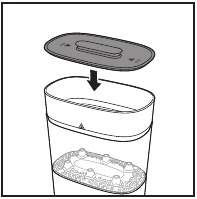
- Put the plug in the wall socket.
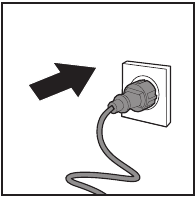
- Turn the on/off button to "Auto" mode. Then press it to switch on the appliance.
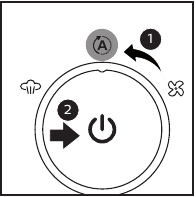
- The appliance starts sterilizing first. The entire progress indicator lights flash to show the appliance is sterilizing.
- After that, drying will start automatically. The progress indicator lights flash and off gradually to show the appliance is drying.
- When the whole process is finished, the lights go off and the appliance switches off automatically.
Drying (SCF293)
- Assemble the sterilizer (see section "Assembling the sterilizer") and place the items to be dried in it.
Note: Make sure all the items are completely disassembled and placed in the basket with their openings pointing down for effective drying.
Be careful. Hot steam will come out of the sterilizer when drying starts.
- Place the lid on top of the small or large basket.
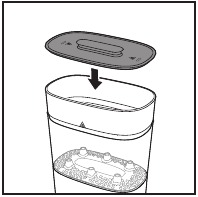
- Put the plug in the wall socket.
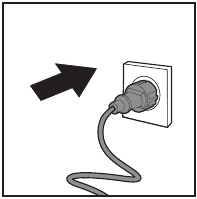
- Turn the on/off button to "Dry" mode. Then press it to switch on the appliance.
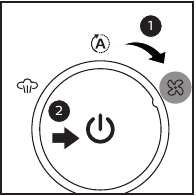
- Drying will start after about 30 seconds. The appliance warms up to produce warm air to dry items.
- The progress indicator lights flash and off gradually to show the appliance is drying.
- When the drying process is finished, the lights go off and the appliance switches off automatically.
Cleaning
Do not use abrasive or aggressive cleaning agents (e.g. bleach) or a scouring pad to clean this appliance.
Never immerse the base and the power cord in water or any other liquid.
Note: The sterilizer is not dishwasher-proof. The baskets, the bottom plate and the lid can be cleaned with hot water and liquid dishwashing detergent.
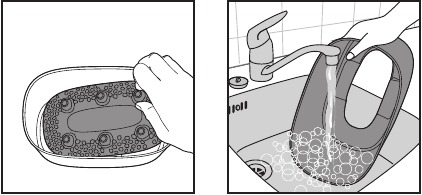
- Always unplug the appliance and let it cool down before you clean it.
- Clean the base with a moist cloth.
- Detach the bottom plate from the large basket.Pour out any remaining water from the large basket drip tray.
Note: Water accumulates on the large basket drip tray after each sterilizing cycle. Pour out the remaining water from the large basket after each use.
- Clean the lid, the small basket, the bottom plate and the large basket in hot water with some liquid dishwashing detergent.
Note: After cleaning, store the sterilizer in a clean and dry place.
Cleaning the filter (SCF293)
- Detach the filter cover from the base.
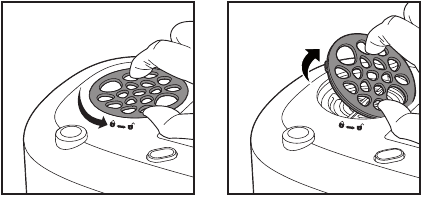
- Take out the filter and clean it under tap water.
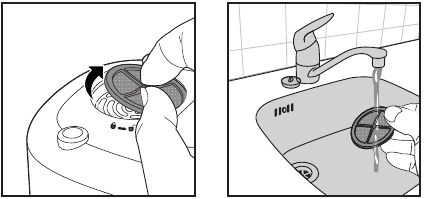
- Let the filter air dry thoroughly. Put it back to the base and close the filter cover.
Note: Clean the filter at least every 4 weeks to ensure that it continues to filter effectively.
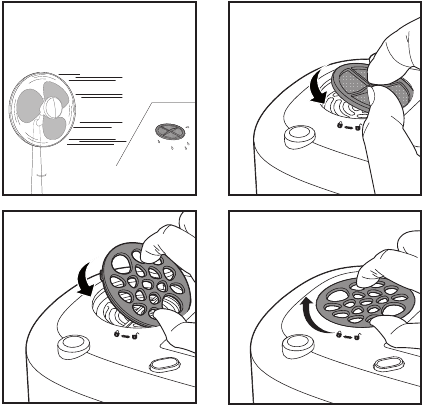
Descaling
The sterilization process is extremely important to ensure the most hygienic standards for your baby. Limescale deposits can slow down the sterilization cycle and even impair its effectiveness.
Limescale is the hard and chalky deposit. Depending on the water type in your area, limescale can have different appearances ranging from snow white looking powder to brownish stains. The harder the water, the faster scale builds up. It builds up in appliances as the residue of minerals naturally contained in water, which fail to evaporate when water is heated. Although it is not harmful as such, it is unsightly, hard to clean and can impair the operation of appliances or damage their components if allowed to build up.
Descale the sterilizer at least every 4 weeks to ensure it works efficiently.
- Pour 90ml/ 3oz of white vinegar (5% acetic acid) and 30ml/ 1oz of water into the water reservoir.
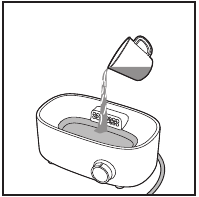
- Place the small basket on the base. Place the lid on top of the small basket.
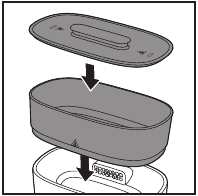 Descaling Step 2" width="" />
Descaling Step 2" width="" />
- SCF291: Press the power on button to switch on the appliance.
SCF293: Turn the on/off button to "Sterilize" mode. Then press it to switch on the appliance.
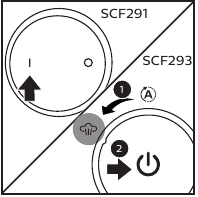
Note: Place the small basket on the base to prevent hot liquid from splashing out.
- Let the appliance operate for 5 minutes, and then switch it off.
SCF291: Press the power off button to switch off the appliance.
SCF293: Press the on/off button to switch off the appliance.
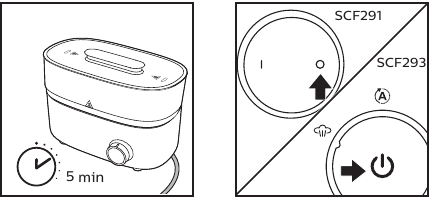
- Empty the water reservoir and rinse it thoroughly. If you still see traces of scale, remove it by sponge. Rinse again and wipe the base with a damp cloth.
- Rinse the small basket and lid as well to remove vinegar solution.
Note: You can also use citric acid based descalers.
Note: Do not use other types of descalers.
Ordering accessories
To buy accessories or spare parts, visit www.philips.com or go to your Philips dealer. You can also contact the Philips Consumer Care Centre in your country (see the worldwide guarantee leaflet for contact details).
Recycling

- This symbol means that this product shall not be disposed of with normal household waste (2012/19/EU).
- Follow your country's rules for the separate collection of electrical and electronic products. Correct disposal helps prevent negative consequences for the environment and human health.
Guarantee and support
If you need information or support, please visit www.philips.com/support or read the separate worldwide guarantee leaflet.
Note: This appliance needs to be descaled regularly for optimal performance. If you do not do this, the appliance may eventually stop working. In this case, repair is NOT covered by your warranty.
Troubleshooting
This chapter summarizes the most common problems you could encounter with the appliance. If you are unable to resolve the problem with the information below, contact the Consumer Care Center in your country.







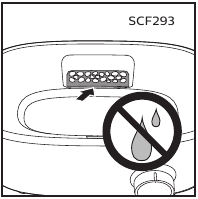
































 Descaling Step 2" width="" />
Descaling Step 2" width="" />

